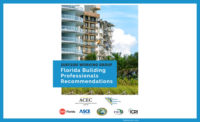A San Francisco civic group is seeking support for an ambitious, 50-year plan, called the Resilient City Initiative, that could help minimize loss and speed recovery after the “Big One.” The initiative can serve as a model for disaster preparedness and recovery for all earthquake-prone communities, say sources.

While developed for San Francisco, the resilient-city concept of the nonprofit San Francisco Planning and Urban Research (SPUR) Association has “application anywhere a city is trying to deal with natural hazards,” said Chris Poland, chairman and CEO of Degenkolb Engineers, San Francisco, at the Loma Prieta Earthquake Commemorative Symposium, held on Oct. 17 in San Francisco on the quake’s 20th anniversary. At the meeting, Poland, a SPUR board member and a co-author of its Resilient City report, called on engineers to get involved with the fledgling initiative. It provides “a very realistic and fresh perspective on what we need to do and what can be done,” said Poland.
SPUR’s report defines a resilient city as having an ability to govern itself after a disaster. Resilient communities “adhere to building standards that allow the power, water and communication networks to begin operating again shortly after a disaster and that allow people to stay in their homes, travel where they need to be and resume a fairly normal living routine within weeks. [Resilient cities] are able to return to a ‘new’ normal within a few years,” says the report.
SPUR has laid out performance goals for a disaster-resilient city, including defining performance measures and vulnerability by occupancy and building type. One big idea is to convince building owners and developers to go beyond current minimum-code requirements for life safety. Under the current system, buildings typically do not collapse completely, but they may be damaged beyond repair.
“We are not recommending that all facilities be upgraded without regard to cost,” said Poland. “Rather, our intent is to require only those improvements needed to assure a quick recovery—or the level of resilience desired for each stage of recovery,” he added.
In general, the structural engineer’s role in seismic design is moving away from predicting damage and toward risk management and what the level of damage means to different stakeholders, said David Bonowitz, a local structural engineer. Damage is measured three ways: safety (deaths), economic impact (dollars) and continuity (down time), he added.
Bonowitz said most seismic retrofits are done to limit the economic impact of an event. It costs $3 to $12 per sq ft to retrofit a building, which is about 20 times less than replacement, said Lindsey Maclise, an engineer with Forell/Elsesser Engineers Inc., San Francisco, at the Third International Conference on Advances in Experimental Structural Engineering, organized by the Pacific Earthquake Engineering Research (PEER) Center.
Retrofits, especially for vulnerable buildings with unreinforced masonry or stilts to provide first-level parking, also are viewed as a sustainable way to limit the amount of material going to landfills after a quake, agreed speakers at PEER’s Oct. 15-16 event, also in San Francisco.




Post a comment to this article
Report Abusive Comment